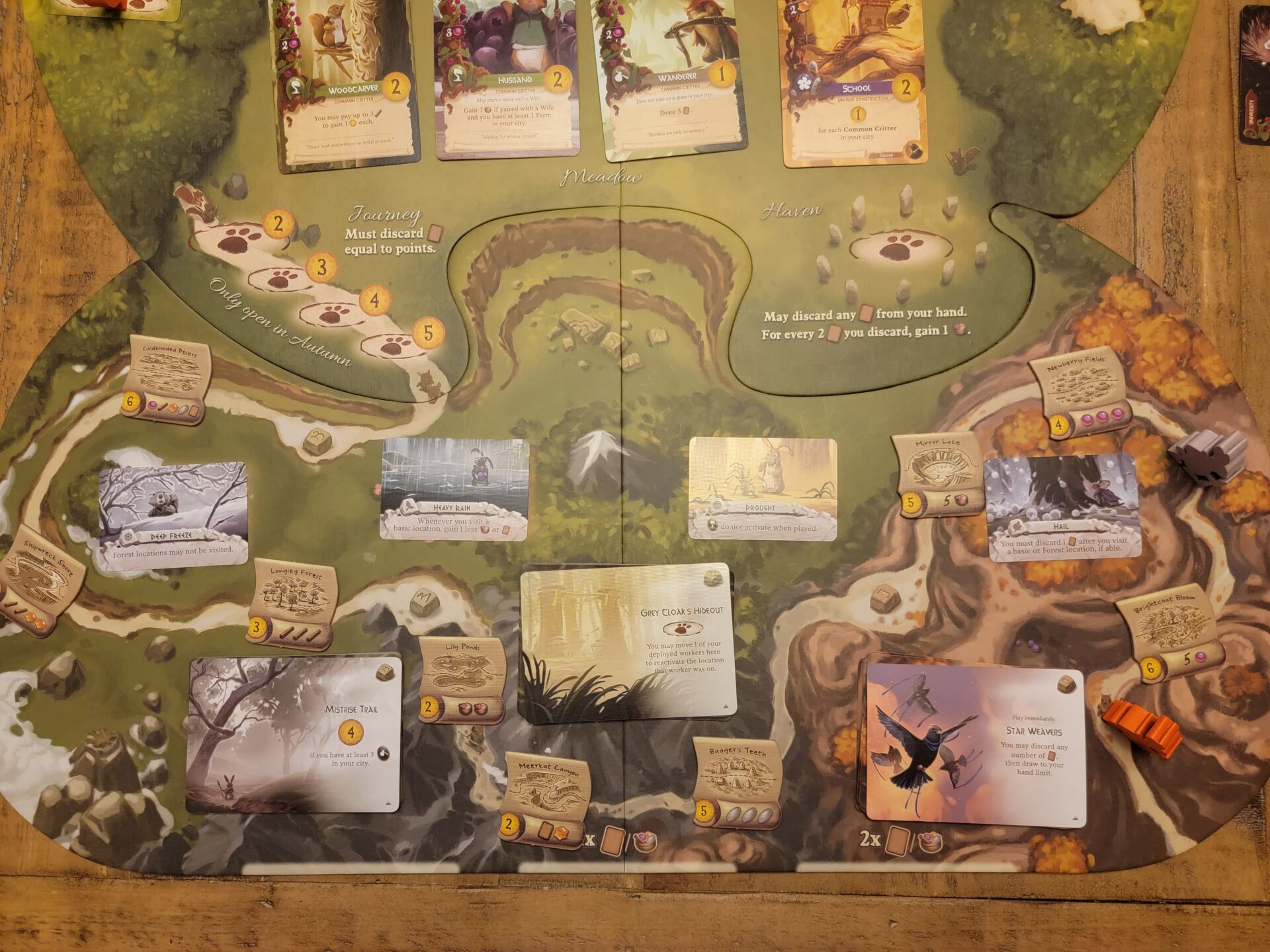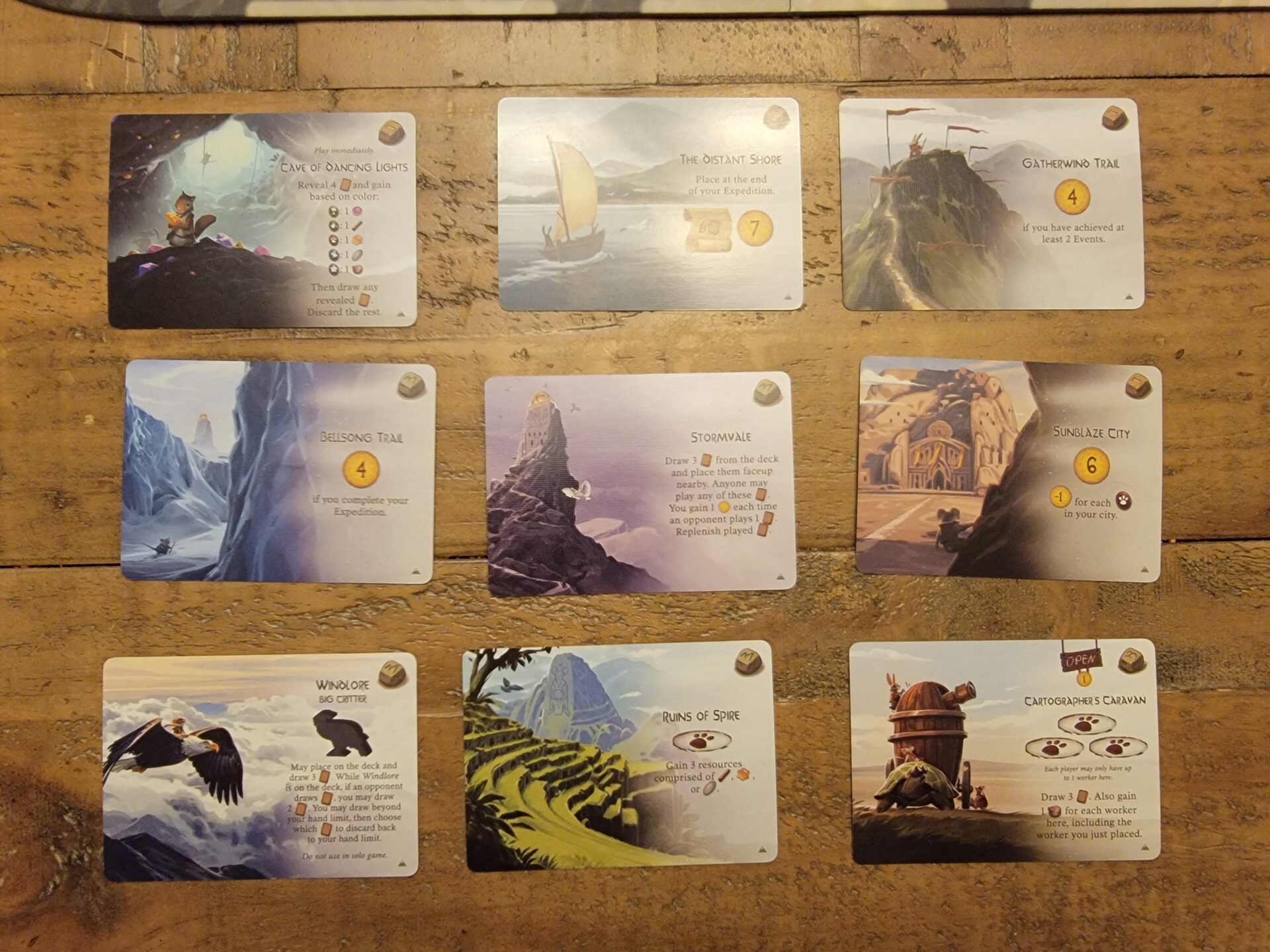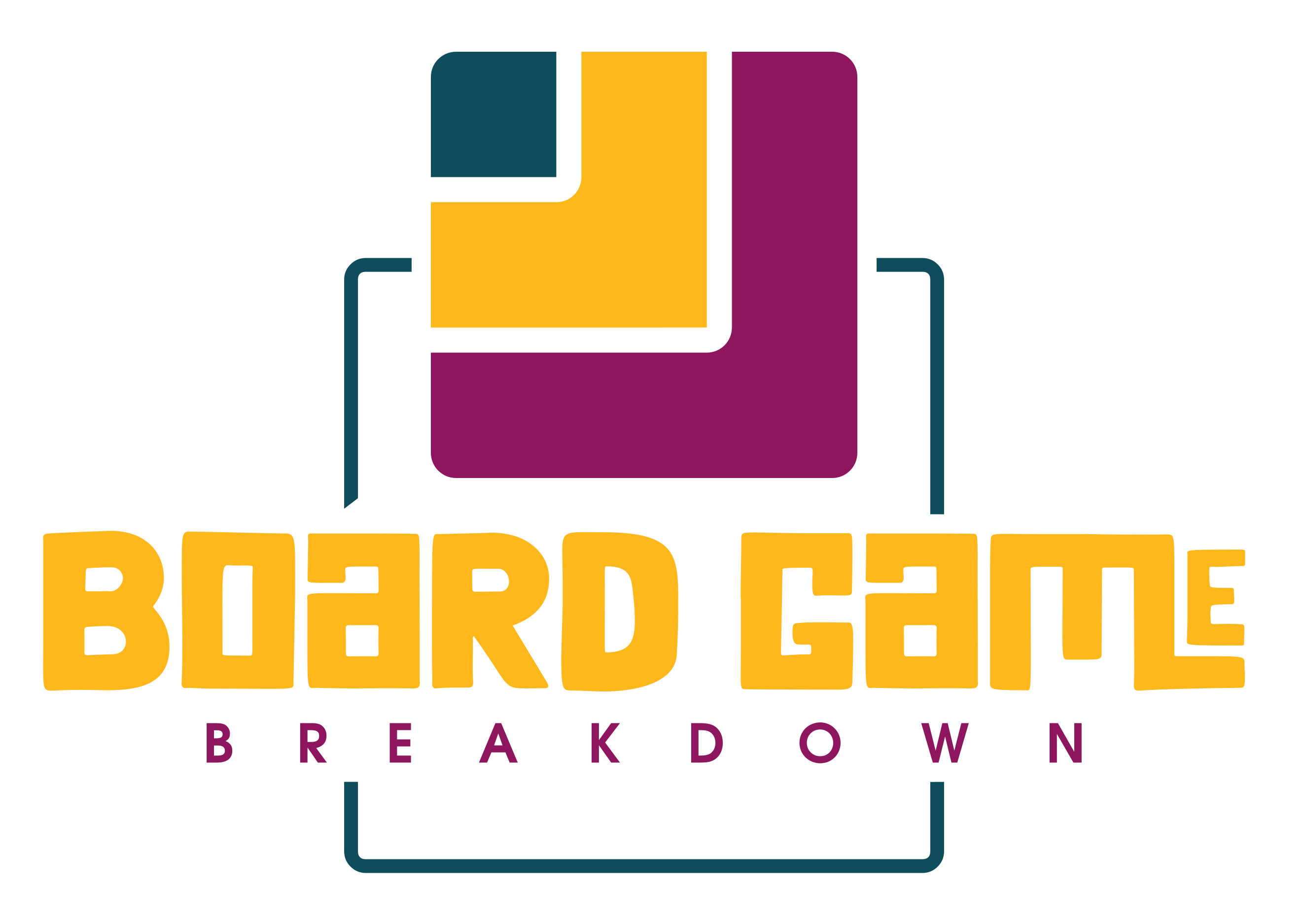
Name: Everdell Spirecrest
Year of Release: 2020
Player Count: 1 – 4 Players
Playing Time: 40 – 100 minutes
Designer: James A. Wilson
Publisher: Starling Games
Primary Mechanisms: Hand Management, Worker Placement, Open Drafting, Tableau Building
Weight (According to boardgamegeek.com): 2.98
Note this review contains pictures that include the 3rd party insert created by Tower Rex. If you are interested, please visit their Etsy website here to support a small business located in Ukraine!
This review might also contain pictures that include components that ship with the Collector’s Edition of Everdell – Spirecrest.
Overview
This is the third review in a series where Board Game Breakdown takes a look at all things Everdell. If you want to read the first installment where we discussed the base game, click here. If you are interested in the second expansion for Everdell, titled Bellfaire, click here. Lastly, you can click here for a piece of prose that I originally posted on boardgamegeek.com that was inspired by a single playthrough of the Spirecrest expansion.
Unlike the Bellfaire expansion, Spirecrest is not modular and you either play with or without the full expansion. While Bellfaire essentially just enhances the base game of Everdell, Spirecrest adds many more decision points and truly alters how you need to approach the game, as you can’t just ignore the Spirecrest board and expect to win. Read on to see exactly how Spirecrest alters the world of Everdell!
Setup

With the added complexity that comes with Spirecrest, there was bound to be more setup when compared to Bellfaire. The game comes with an extra board, called the Mountain Board, and after it is unfolded, it will lock into the bottom portion of the main board, right underneath where the Journey action locations are printed. The next step in setup is placing out a lot of different cards and tiles into their specific areas. The Weather Cards are the smaller of the cards and you receive 12 of them, three for each season. You will shuffle each season’s pile of cards, draw one, and place the winter card face up and the other three face down on the board. Next, you will separate the Discovery Cards into their three categories of Foothills, Peaks, and Ridge. These will be placed face down into their corresponding spots on the Mountain Board.
Once the cards are placed, you will give each player a single Everdell Map Tile. You will then shuffle the 24 Map Tiles and place one more than the player count face up on the foothills trail and then repeat (but this time face down) on the other two trail sections. Lastly, you can place the Big Critter meeples and saddles off to the side and then grab each players’ Traveler meeple (the large bunny with a walking stick) on the beginning of the trail. Now we’re ready to start!
Gameplay Changes
Earlier, I mentioned the added complexity of Spirecrest, and I don’t think I’m wrong about this as even the 2nd page of the rulebook recommends that you do not play Spirecrest mixed with another expansion but don’t worry, almost all of the added mechanics take place when you Prepare for Season. Because of the way this expansion works, we will not talk about the normal turns during a season since this portion of the game doesn’t change much. When a player does decide to Prepare for Season, a few key things happen.
- The player chooses one of the three available Map Tiles face up on the trail and places it to the right of their current Map Tiles, creating their Expedition.
- The player then reveals three Discovery Cards from the corresponding trail pile and places them at the bottom of the board. The first one is free, the second one cost either one resource or one card, and the third costs either two resources, two cards, or a combination of the two. The player selects (and, if applicable, pays for) a card and plays it into their play area.
- The player moves their Traveler meeple to the next trailhead and reveals the Weather Card for the next season.
Let’s take a look at each of these changes in more detail.
Map Tiles and Expedition
Every time a player moves to the next season, they are able to select one of the available Map Tiles on the current trail. As noted in the setup section, there is always one more Map Tile than number of players playing so even the last person to Prepare for Season still gets a choice of tiles. Each tile is emblazoned with a victory point value and a cost in resources or cards. The tile is picked up for free when a player Prepares for Season, but the cost must be paid at the end of the game in order to score the notated victory points. The catch with this is at the end of the game, you must start with the left-most Map Tile and pay that cost before your Traveler meeple can advance to the next Map Tile. In this way, if you are unable to secure the required resources to pay the cost on your first Map Tile, you are in eligible to continue your Expedition and gain any other victory points from the other Map Tiles.
Depending on how many resources the tile will cost, the victory points can range from two to six points on each tile. Theoretically, the Expedition itself could net you 18 points at game end. I find myself focusing a lot on saving up the necessary resources to ensure that I always finish traversing my three Map Tiles, but this could be to the detriment of my city. Am I conserving too many resources and concentrating too much on the Expedition when I could just be pouring them into playing more cards? I’m sure someone smarter than me has gamed out all of the possible outcomes and statistically speaking, one is better than the other. For me though, I enjoy the “game within the game” of constructing the most efficient Expedition and/or leaving my opponent with Map Tiles that I know will be hard on them to accomplish and watching them get frustrated.
Discovery Cards

I don’t know this for a fact, but I would guess that the Discovery Cards are probably everyone’s favorite piece of Spirecrest. I wager this bet because the Discovery Cards is where you can score yourself one of the lovely Big Critters that come in the expansion. The standard expansion ships with five of these Big Critter: Stubblehoof the moose, Honeypaw the bear, King Rhun the mountain goat, Whisper the wolf, and Windlore the eagle. If you secured the Collector’s Edition, you are given three extra Big Critters: Truffle the boar, Corliander the peacock, and Firebeak the vulture. When a player obtains one of the Discovery Cards for the Big Critter, you take said Big Critter meeple and place one of the rubber saddles on its back. These allow you to place one of your regular animal meeples into the saddle so they can “ride” the Big Critter. Yes, it is silly to see one of your owl meeples riding in a saddle of a mountain goat, but also very satisfying because these Big Critters alter the rules of that one worker when it is placed. Each Big Critter alters the rules differently and its this variety that make the Big Critters so much fun to obtain and play with. If you’ve ever played Viticulture, it is similar to the Grande Worker or the Special Workers in Viticulture: Tuscany Essential Edition.
There are 34 other Discovery Cards (28 in the standard expansion edition and six in the Collector’s Edition) that might make an appearance and have nothing to do with the Big Critters. These range from being an extra action location you can trigger, to bonus victory points for fulfilling a certain criterion, and even to giving you an ongoing power once you obtain the card. While not every card is all that appetizing, I like the mix of them because if they were all “Player Power” oriented or if they were all Big Critters, keeping up with all of your special abilities could get out of hand really quick.
Weather Cards
If my favorite part of the expansion is the Discovery Cards, I’ll say that my least favorite is the Weather Cards. These come in the form of one card per season that alter the rules for that season and almost all of them can cause a lot of havoc on the board. Right off the bat, in the very first season (Winter), one of the cards can stop you from placing any workers into the Forest locations for the whole season. This happened on my wife and I’s last game, and it was nearly impossible to get any Green Production cards out. We then moved to Spring and the Weather Card stated that at all locations we had to take one less resource or card. This basically made the one pebble location we had worthless as it only gives one pebble.
The Weather Cards might be needed to temper the points because of all of the extra actions and powers that players are going to be gaining from the Discovery Cards, but I think they just annoy me more than anything.
Conclusion
As with the other Everdell expansions, players are also given some new animal type meeples. The standard edition comes with the orange foxes and the Collector’s Edition comes with owls, lizards, and moles. At the time of this writing, the Collector’s Edition is going for about the same price as the base Everdell and while this might be a hefty price for many people, this expansion truly transforms the game into something different. If you’re new to Everdell, I would say you should stick to the base game or the Bellfaire expansion and hold off on Spirecrest. But if you are an Everdell veteran and maybe you’re growing a little stale on the base game, I can’t recommend Spirecrest enough as it definitely takes the game to new heights.
Rating
Ratings are based on 5 main criteria: rulebook, setup, components, art & graphic design, and gameplay. The first 4 criteria are rated 1 to 5 and the gameplay is rated 1 to 10. These scores culminate in an “overall satisfaction” score that is rated from 1 to 10. If the reviewed game has both a solo and multiplayer mode, I have assigned scores separately to give context to which mode we enjoy more.
Links
As an Amazon Associate I earn from qualifying purchases.
Amazon: Everdell Spirecrest Board Game
